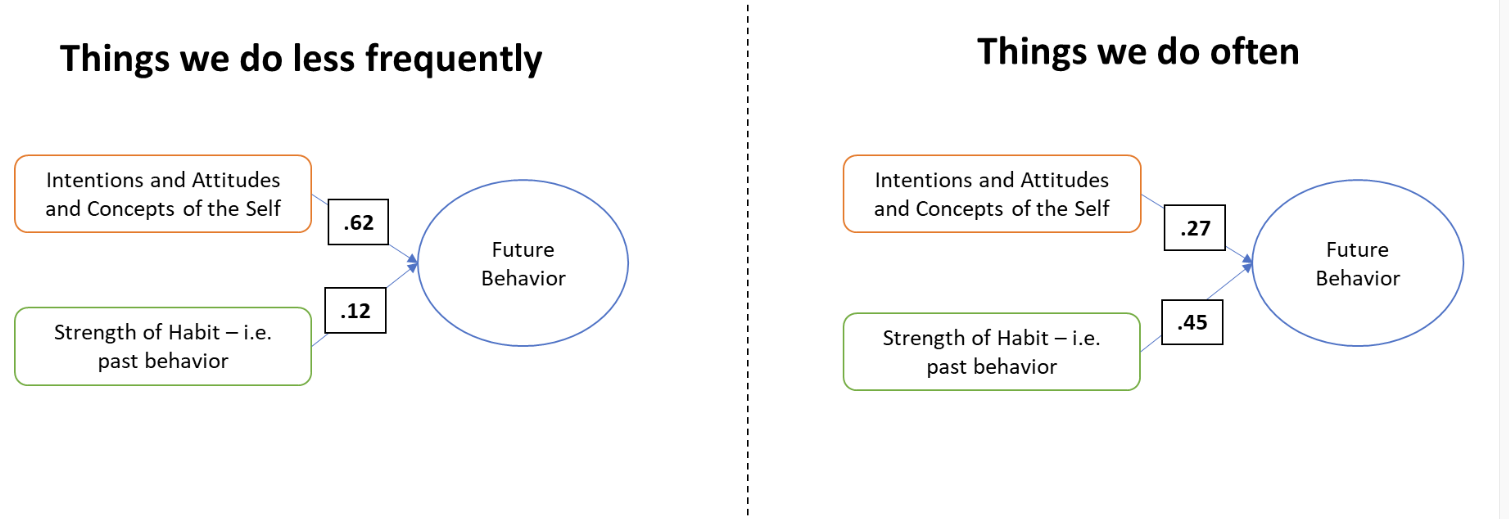Past Giving Predicts Future Giving—And That’s the Problem
Past giving predicts future giving, and that’s where the circular logic of donor understanding begins. It’s like saying, someone is on time because they tend to be punctual. True, but not useful.
Yes, past behavior can improve efficiency. But you can efficient your way out of business. What this sector needs is more effectiveness—not just predictive modeling but causal understanding. And that’s where most fundraising models fall apart.
The Habit Trap in Fundraising
I used to dismiss the importance of past behavior beyond prediction. But I was wrong.
What I overlooked was why past behavior predicts future behavior: habit.
Habits—good and bad—are at the root of fundraising success. And unfortunately, our sector has more bad habit giving than good.
How so? Look at these common patterns:
- The “oft-asked, never givers”
- The “give once, not againers”
- The “first 3-month quitters” in monthly giving
In reality, our job isn’t just to create good giving habits—it’s to break bad ones.
Breaking Bad Habits in Fundraising
Nowhere is this more obvious than direct mail in the U.S. and face-to-face (F2F) fundraising outside the U.S.
- Direct mail is a small, overfished pond, where the same people are mailed over and over. The donors are the extreme minority. Those who ignore it? They’ve formed a habit of not giving.
- F2F canvassing in Canada, the UK, mainland Europe, and Australia follows the same pattern—most people have developed a habit of avoiding, ignoring, or dismissing fundraisers.
What Makes a Habit a Habit?
Think of behaviors on a spectrum:
- Frequent, automatic habits (drinking coffee, brushing teeth)
- Infrequent, deliberate behaviors (voting, donating)
Unlike brushing your teeth, donating isn’t a subconscious, automatic action for most people. But not donating often is. People toss solicitations in the bin—physical or digital—without a thought. That’s their habit. And yet, we keep treating these people the same way, reinforcing their existing behavior. More of the same just entrenches their bad habit.
 So, How Do You Break a Bad Habit?
So, How Do You Break a Bad Habit?
Since habits are tied to context and cues, the key is disrupting the stable environment that reinforces non-giving. Here’s how:
- Change the Format – If it always looks the same, it’ll get the same result. Think VR for canvassing, high-production mall sets, or breaking the standard “urgent” direct mail look.
- Introduce a New Wrinkle – Door-to-door canvassers convert better when they leave a door hanger the day before their visit. What’s your email or mail equivalent?
- Rethink the Copy – The standard pressure-heavy “urgent gram” is a one-way ticket to the trash. Say something different—something identity-based, autonomy-supportive, or curiosity-driven.
- Adjust the Timing – Instead of the usual December deluge, try August. Instead of mailing at the start of the month (bill season), try mid-month.
The Real Takeaway
Fundraising isn’t just about getting people to give. It’s about breaking their habit of ignoring us.
And that won’t happen by doing more of the same.
Kevin



hi Kevin, this is great.. but what would be really helpful if you can show the impact of some of these changes? Like we know that a follow up works, we know that adding an email to the mail works and a phone call/voice broadcast ahead or text after works more once again. What are you seeing?
Certainly, your reflection is most apt. For major or large gift donors, I would suggest that nonprofits have to fulfill their promises. If a gift is given to accomplish certain tasks, enforces a philosophy, encourage a desire, enrich research, and the list goes on. The best way to get the next gift is to do what you promised for the first one.
While simple, and for whatever reason, my own experience with thousands of nonprofits, all too often they don’t comply with the original promise. Now nearly 40 years ago while serving as VP of Wichita State, I asked for and received a gift of $12 million from W. Frank Barton. He gave to create the W Frank Barton School of Business. In the last half decade of vast change at WSU, I wondered whether when a new building was going to be built would the University fulfill the promise I had made on behalf of WSU to Mr. Barton, W Frank Barton School of Business name would appear on all future buildings. Essentially promising him immortality.
Congratulations to WSU, they found another family for the building to be named, but it was clear the building was to be home for the W Frank Barton School of Business. In fact the families became friends and contributed to each others projects.
For a senior member of the fundraising community, it warms my heart to see promises I committed to for donors were recognized and maintained. As a result the University can proudly stand for living up to its commitments. Other non profits should look to the example of consistency with respect and admiration. I do.